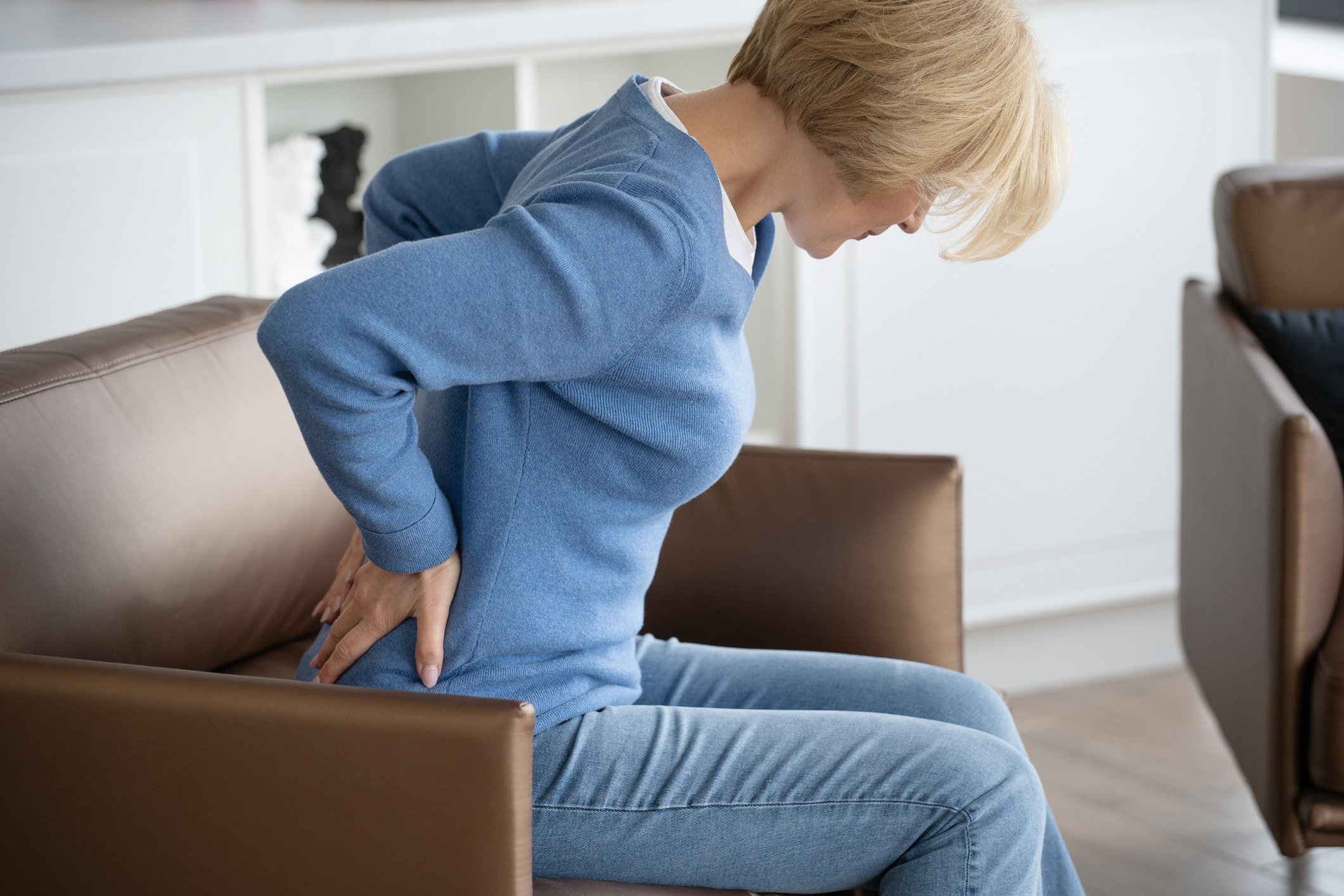Get Easy Health Digest™ in your inbox and don’t miss a thing when you subscribe today. Plus, get the free bonus report, Mother Nature’s Tips, Tricks and Remedies for Cholesterol, Blood Pressure & Blood Sugar as my way of saying welcome to the community!
Low back pain? Walking it off really works

It may seem counterintuitive that walking can help your lower back pain.
I mean, when your back hurts, probably the last thing you’re thinking about is moving more – you simply want to sit down or lie down and stay put.
But if you suffer from lower back pain (about 80 percent of American adults will at some point in their lives), you need to know that one of the least expensive, most effective sources of relief and prevention is as simple as putting on a pair of sneakers and heading out the door.
Why is low back pain so common?
Our lower back is the central point of our whole body. It needs to be able to bend and twist in multiple directions while also bearing the weight of our body.
Our spine is surrounded by a group of core muscles.
We tend to think of our abdominals as the main muscles that support our spine. But the core muscles that surround our spine include the deep back muscles, as well as the hip muscles, quadriceps and hamstrings, which support our spine and pelvis.
These muscles work similarly to a back brace, keeping our midsection stable and upright. That’s why wearing a brace provides short-term pain relief for patients with lower back pain.
However relying on a brace for too long can weaken those core muscles.
“If you can develop your own internal brace, that is more effective,” says Dr. Sean Barber, a neurosurgeon and spine specialist at Houston Methodist Hospital.
Study shows that walking keeps back pain away
In a newly published study, regular walking helped adults with a history of low back pain go nearly twice as long as they had before without a recurrence of pain.
A clinical trial by the Spinal Pain Research Group at Macquarie University in Sydney followed 701 adults who had recently recovered from an episode of back pain.
Participants were randomly assigned to either an individualized walking program and six physiotherapist-guided education sessions over six months, or to a control group.
“The intervention group had fewer occurrences of activity-limiting pain compared to the control group, and a longer average period before they had a recurrence, with a median of 208 days compared to 112 days,” says Prof. Mark Hancock, senior study author.
In other words, people who walked had longer pain-free periods, and when they did have back pain, it tended not to interfere with their daily lives.
How walking helps relieve back pain
Besides strengthening those core muscles that support the spine and lower back, Prof. Hancock believes there are other factors involved:
- Oscillatory movements – Walking causes the spine to swing back and forth like a pendulum
- Weight-bearing – Muscles and spine are gradually strengthened when those swinging movements are combined with being required to carry some weight
- Relaxation and stress relief – Next time you’re feeling tense or nervous, take a good, brisk walk and see how you feel afterward!
- Release of endorphins – Endorphins are your body’s natural pain relievers and mood boosters. Exercise is one way to release them. So are music, meditation, and certain foods like dark chocolate and strawberries.
Other ways to strengthen your core for less back pain
Here are a few other options you can pursue to help relieve your lower back pain and keep it away for longer periods of time:
Hip stretches. This video demonstrates some easy hip stretches that can strengthen your back.
Yoga. You don’t need to go to a class for this. There are many at-home videos available online. If you’re not sure where to start, look for videos for beginners.
Chiropractic treatment. Chiropractic is one of the best-proven methods of relieving back pain. It’s even covered by most insurance plans. Here’s what to expect when you see a chiropractor for the first time.
The moral of this story: you don’t have to sit still for chronic back pain when there’s so much potential relief out there.
Start walking and see how much better your back will feel. But if you still need a little help, add fish or krill oil to your routine. Eicosapentaenoic acid (EPA) — an omega-3 fatty acid — is known to reduce both neuropathic and inflammatory pain.
Editor’s note: There are perfectly safe and natural ways to decrease your risk of blood clots including the 25-cent vitamin, the nutrient that acts as a natural blood thinner and the powerful herb that helps clear plaque. To discover these and other secrets of long-lived hearts, click here for Hushed Up Natural Heart Cures and Common Misconceptions of Popular Heart Treatments!
Sources:
Walking brings huge benefits for low back pain — Science Daily
How Simple Exercises May Save Your Lower Back — New York Times
Elucidating the Molecular Targets of “Eicosapentaenoic Acid”: A Natural Remedy for Chronic Pain — Okayama University














